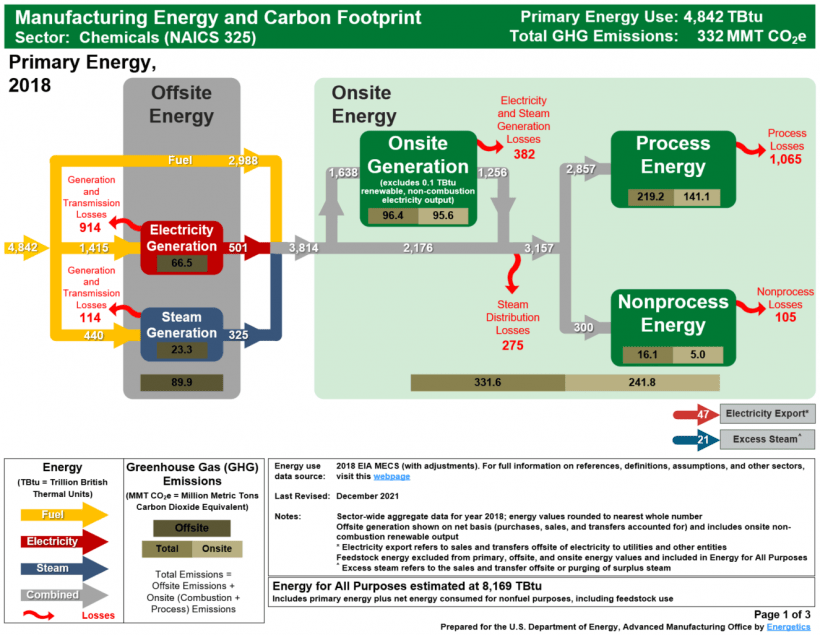2018 Manufacturing Energy Consumption Survey Consumption Results

U.S. manufacturing is becoming more fuel-efficient and less labor-intensive since 1998. Manufacturing gross output grew by 12% while fuel consumption decreased by 16%. Labor productivity—measured as gross output divided by the number of employees—also improved by 62% in the same period. In addition, fuel intensity—measured as fuel consumption divided by gross output—decreased by 25% from 3.2 quadrillion British thermal units per billion dollars in 1998 to 2.4 quadrillion British thermal units per billion dollars in 2018.
Features
 2018 Manufacturing Energy Consumption Survey Consumption Results
2018 Manufacturing Energy Consumption Survey Consumption Results
Release Date: March 31, 2021
More information about the 2018 manufacturing consumption data and analysis are available in our data tables and analysis report .
 The Capability of U.S. Manufacturing to Switch Fuels
The Capability of U.S. Manufacturing to Switch Fuels
Release Date: September 6, 2018
Preliminary estimates show that the total U.S. manufacturing energy consumption increased about 3.7% between 2010 and 2014. This is the first measured 4-year increase in manufacturing energy consumption since 2002 (Figure 1). Energy source shares have changed modestly since 2002, with natural gas rising from 29% to 33% of all manufacturing energy consumption. Conversely, during this same period, the share of delivered energy to manufacturing from coal, coke and breeze declined from 10% to 8%, while the share of fuel oils and naphtha together decreased from 7% to 5%.


